Multifunctional Shock Wave Machine
$899.00 USD
Multifunctional: It has a wide range of uses, such as helping to treat frozen shoulder, tennis elbow, plantar fasciitis, and delayed fracture healing. The newly upgraded Q80, an improved version of the Q60, has been upgraded from the original 7-inch color touch screen to an 8-inch color touch screen, with clearer functional displays. It is equipped with 5 transmitters , a maximum rated power of 350 watts, an adjustable working intensity ranging from 0.5 to 8 bar, an adjustable frequency of 1 to 22 Hz, adjustable impact times from 500 to 3000, and 12 functional modes. The interface is simple and easy to use, allowing modes and parameters to be changed at any time according to the needs of different conditions and individual circumstances.
Description
| Model | Q80 |
| Voltage | AC 110 / 220 V |
| Frequency | 50Hz/60Hz |
| Power | 350 W Max |
| Current | 5A Max |
| Striking Strength | 0.5 – 8Bar |
| Working Frequency | 1 – 22 Hz |
| Number of Working Heads | 5 |
| Setting Times | 500-3000 |
| Net Weight | 12Kg |
| Instrument Dimensions | 14 × 17 × 8 inch/362 × 434 × 205mm |
| Package Size | 21 × 18 × 14 inch/530 × 450 × 365 mm |
| Certification | CE Certification、FCC Certification |
Product Advantages

High Frequency Operation
The frequency of Q80 can reach 22 Hz, which means it can emit up to 22 pulses per second. The bullet-shaped pulsed percussion treatment head in the handle works rhythmically at a very high speed under the high-frequency drive of 22 Hz, generating short-duration, high-pressure mechanical sound waves.

Wide Coverage of Working Intensity
The working intensity range of Q80 is set from 0.5 to 8 bar, which can fully meet the diverse rehabilitation and physiotherapy needs of different user groups. For example, to treat the genital area and wrist, which can only tolerate very light stimulation, you can choose a low-intensity treatment of 1-2 bar. For those in the late stages of rehabilitation who need higher intensity to strengthen muscles and improve joint function, Q80 also has the right working intensity.
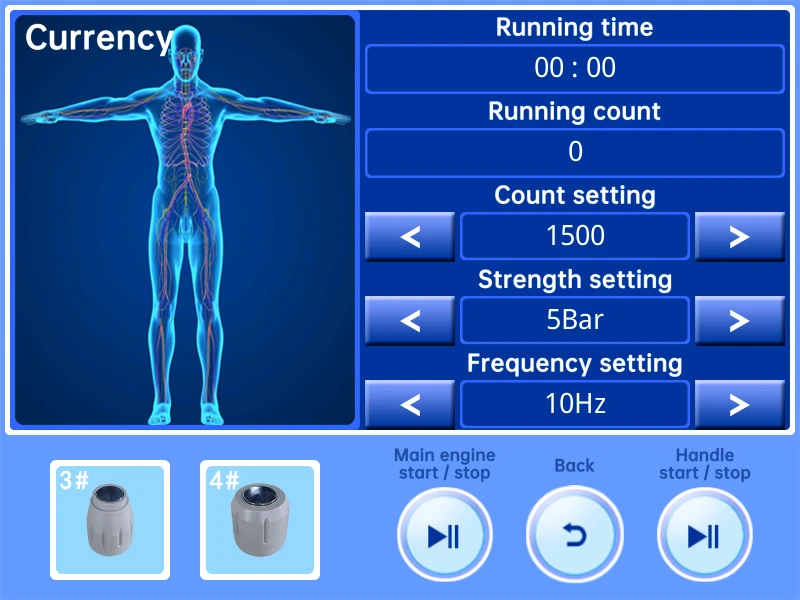
Convenient Operation
The interface design of Q80 follows the concept of simplicity and intuitiveness, and all operations are clear at a glance. Preset and recommended values are provided for key parameters such as energy intensity, frequency and times. Users can intelligently adjust the parameters through simple touch screen operations, quickly get started and easily master the product.
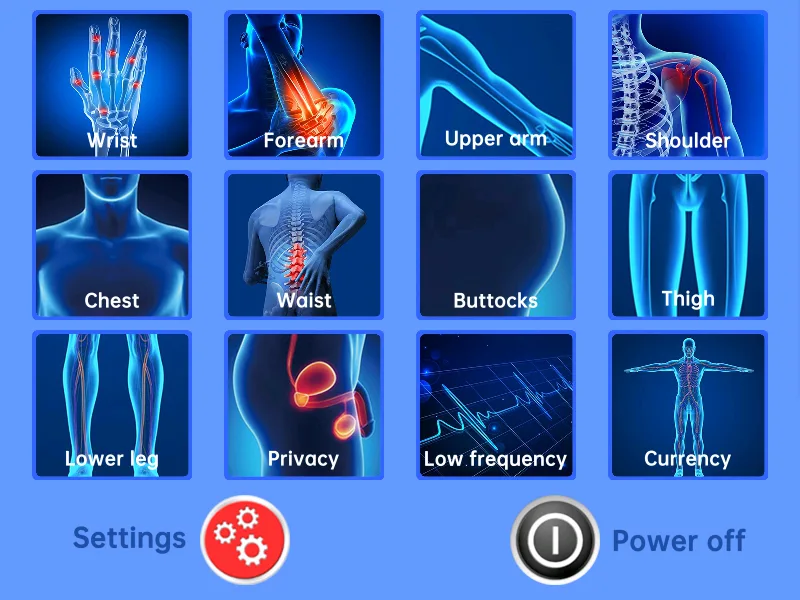
Multiple Functional Modes
Q80 is equipped with up to 12 rich treatment modes. Each treatment mode can be flexibly combined with different types of emitter heads, covering personalized solutions for different diseases and body parts.
Q80 Advantages
| Comparison | ordinary shock wave machine | Q80 shock wave machine |
| Service life | 3-5 years under normal circumstances | 10-15 years under normal circumstances |
| Effective speed | Multiple treatments are required, and the effect is minimal. | A single treatment can be effective, and 3-5 treatments can significantly improve symptoms. |
| Consumables cost | The handle and probe need to be replaced frequently | All-metal treatment head, lifespan up to 5 million times |
| Certification | No medical device certification | CE certification, CFF dual certification |
| Treatment head material | Plastic/resin material, easy to wear | Medical grade titanium alloy, resistant to high temperature and high pressure |
| Energy regulation accuracy | Coarse grading (usually 3-5 grades) | 0.5-8Bar adjustment, accuracy of 0.5Bar, precise matching of individual differences |
| Treatment mode | Few preset modes | 12 smart modes |
| Heat dissipation performance | Continuous operation can easily overheat and requires shutdown for cooling | There is a cooling fan design on the back and ventilation holes on the side. |
Product Display
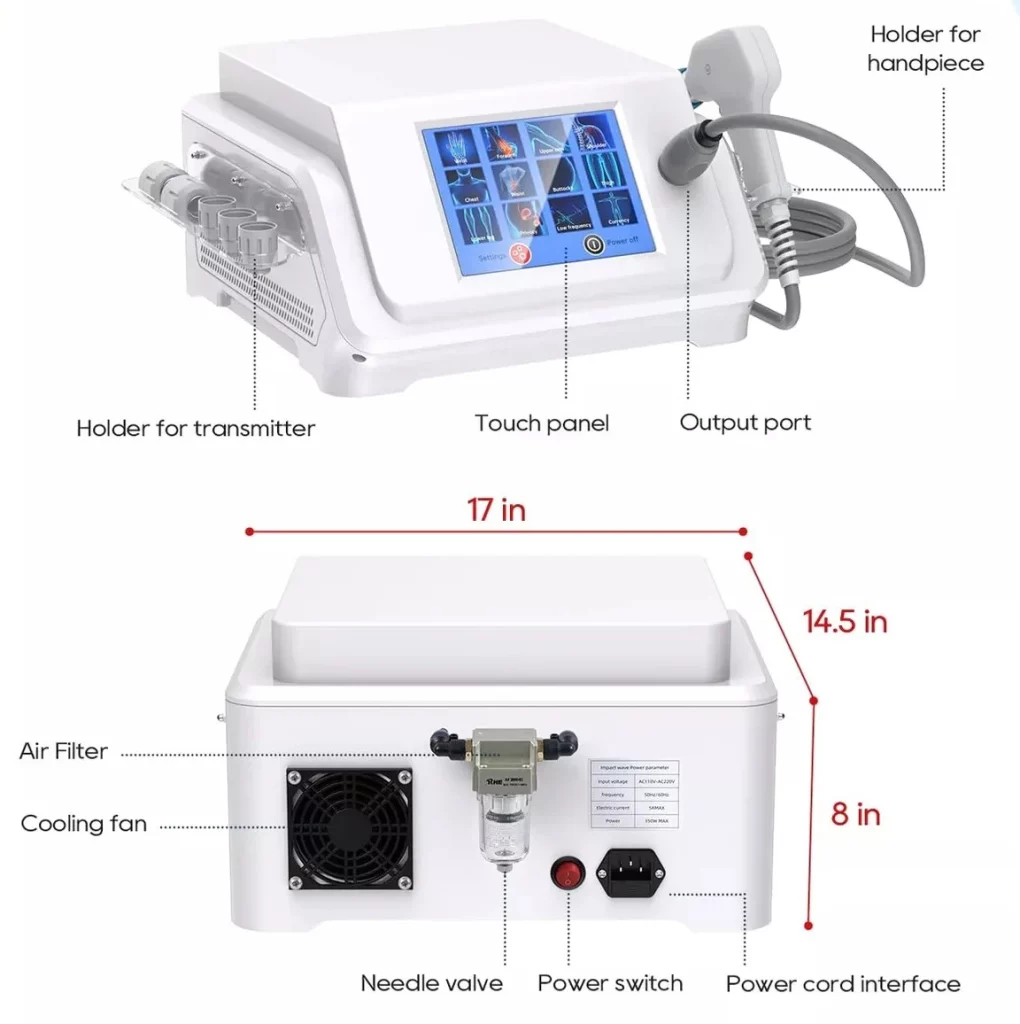
Product Details
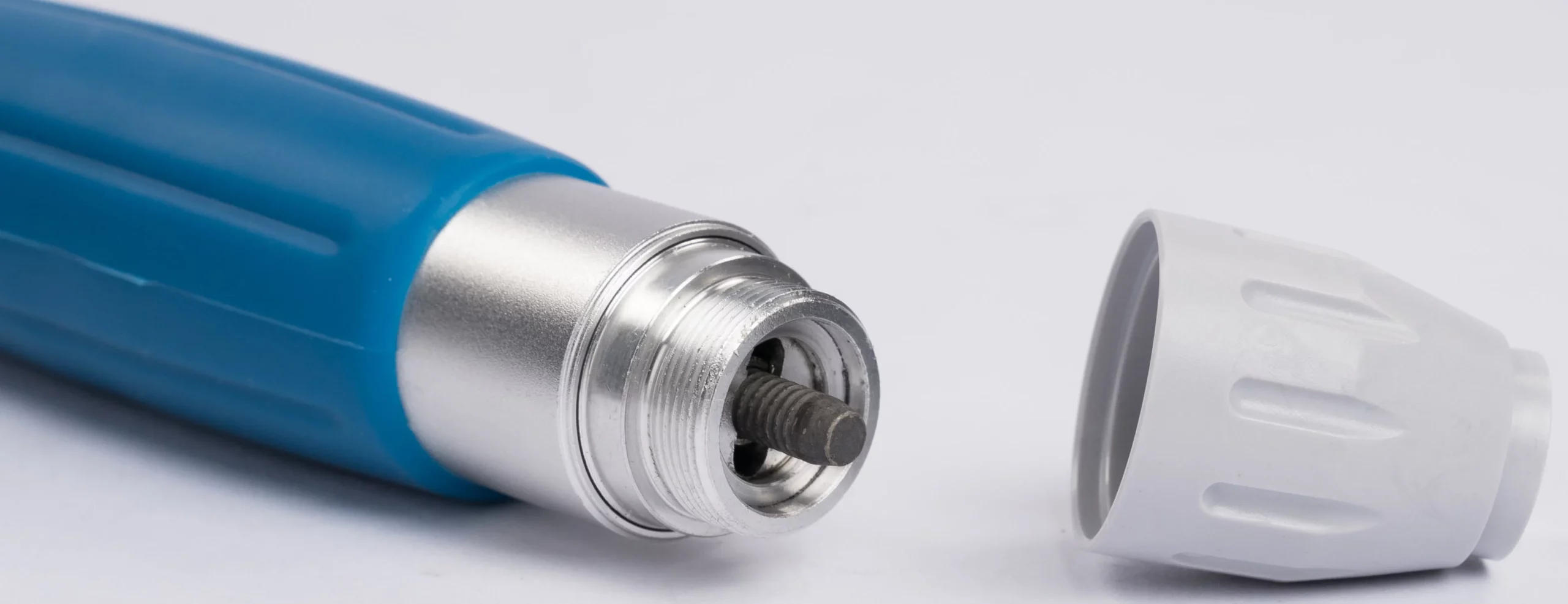
Handle Front Part
The front part of the handle can be flexibly equipped with different transmitter heads.Users can easily switch them according to specific treatment needs to achieve precise treatment.
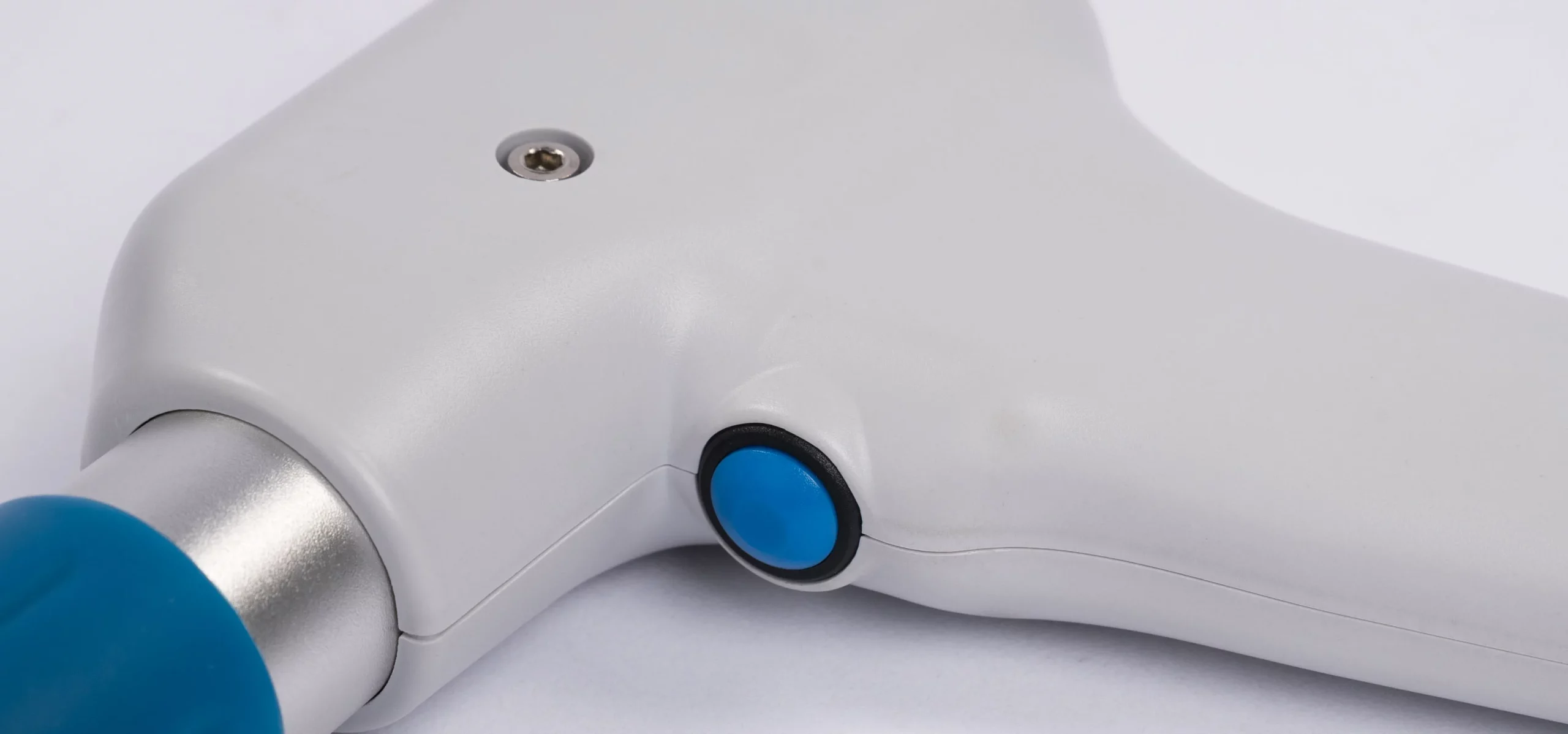
Handle Button
The handle is equipped with a simple switch that is easy to use and has a one-touch control.
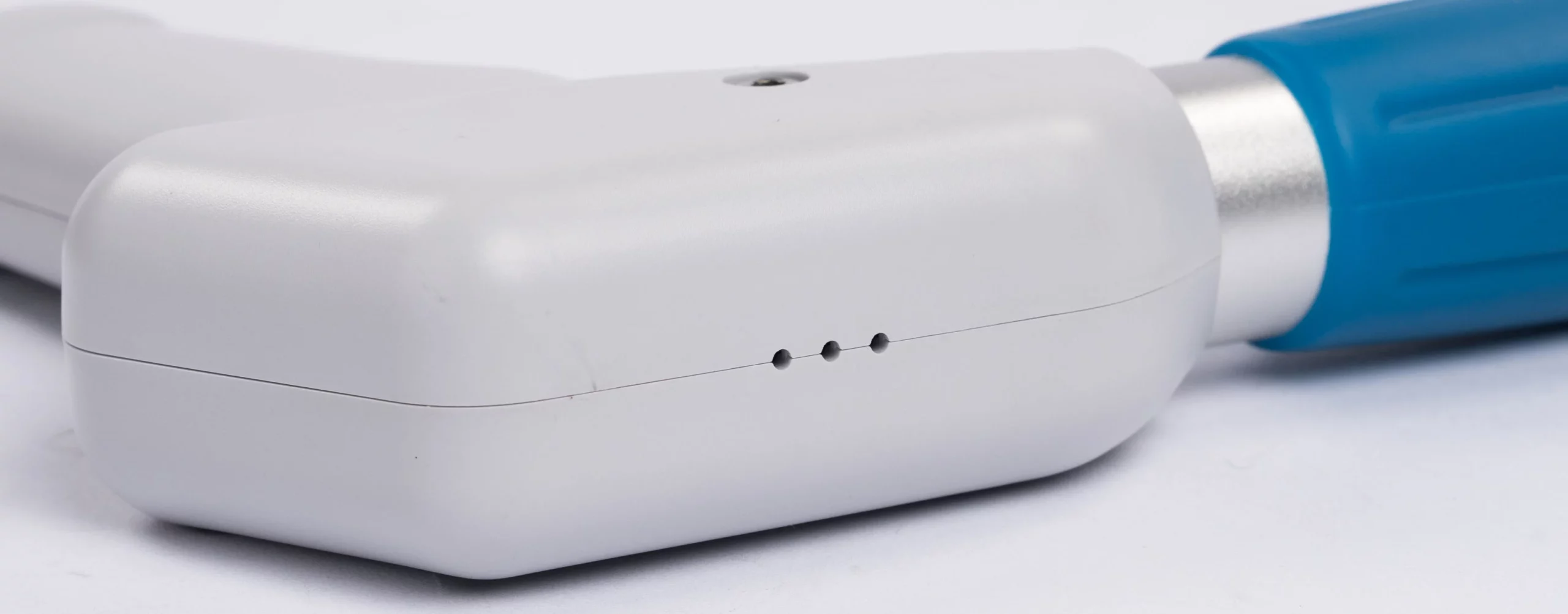
Exhaust Valve
The main function of the exhaust valve is to regulate the internal air pressure during the operation of the handle, thus ensuring the normal operation of the equipment.
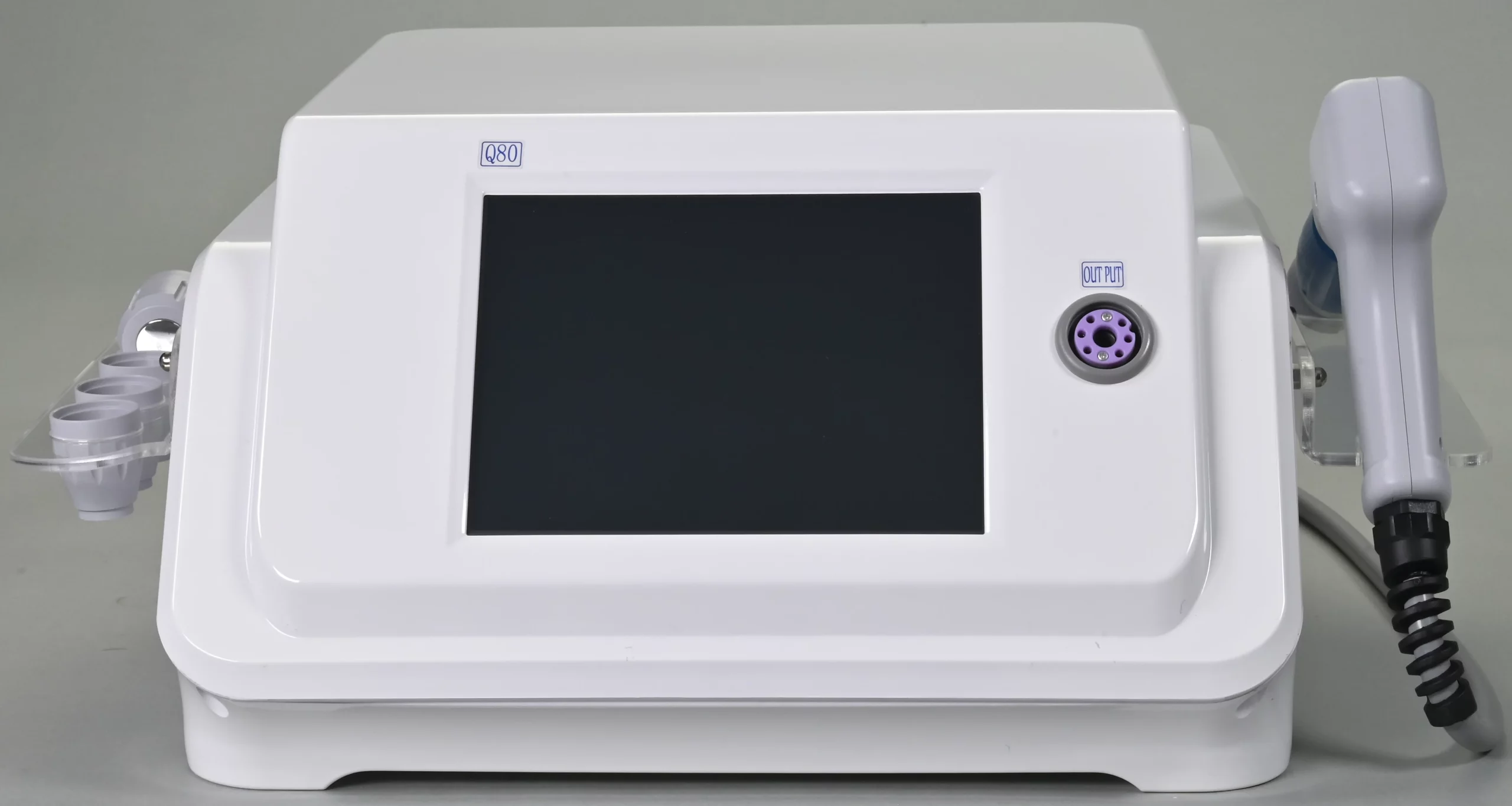
Main Unit
The body of Q80 is made of high-strength and lightweight aluminum alloy material, which can effectively resist the collision and friction that may be encountered in daily use. The surface of the aluminum alloy is carefully anodized to form a hard and dense oxide film, which not only significantly enhances the wear resistance of the material, but also has good corrosion resistance, thus extending the service life of the therapy device.
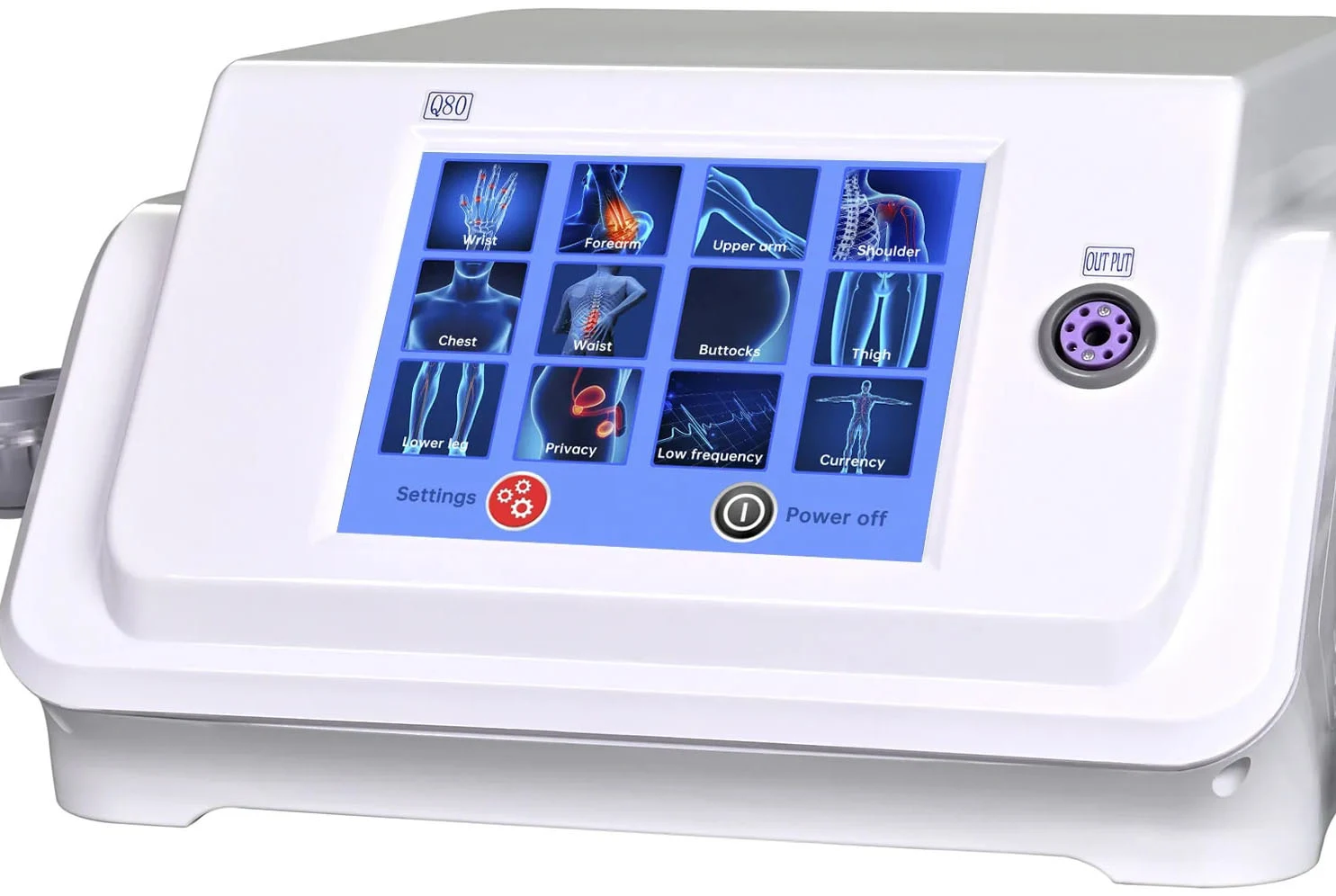
LCD Touch Screen Design
Q80 uses an LCD touch screen and all data is clear at a glance. If you want to change the treatment intensity and frequency, you can do it directly on the screen. It is convenient, fast, and easy to learn and use.
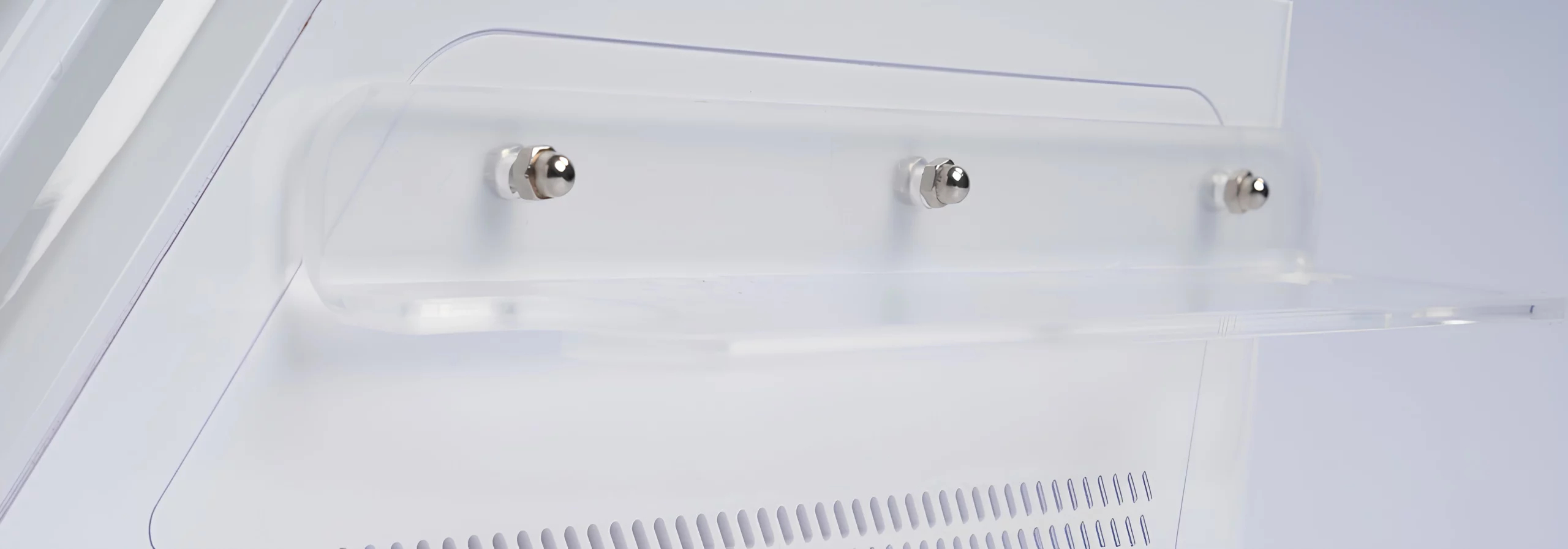
Handle Holder
It can hold the handle securely, preventing collisions and wear caused by random placement. It also facilitates quick access.
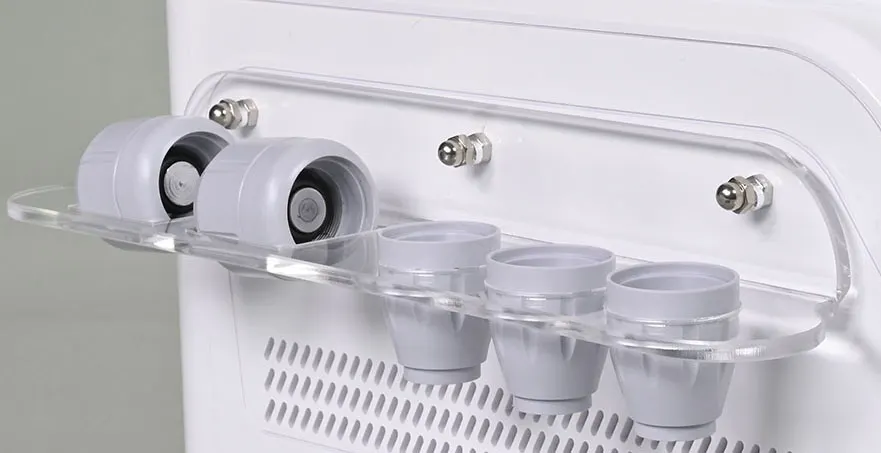
Transmitter Head Holder
It is used to stably hold different shockwave transmitter heads, ensuring that the positions remain fixed during replacement and storage, and facilitating easy access at any time.
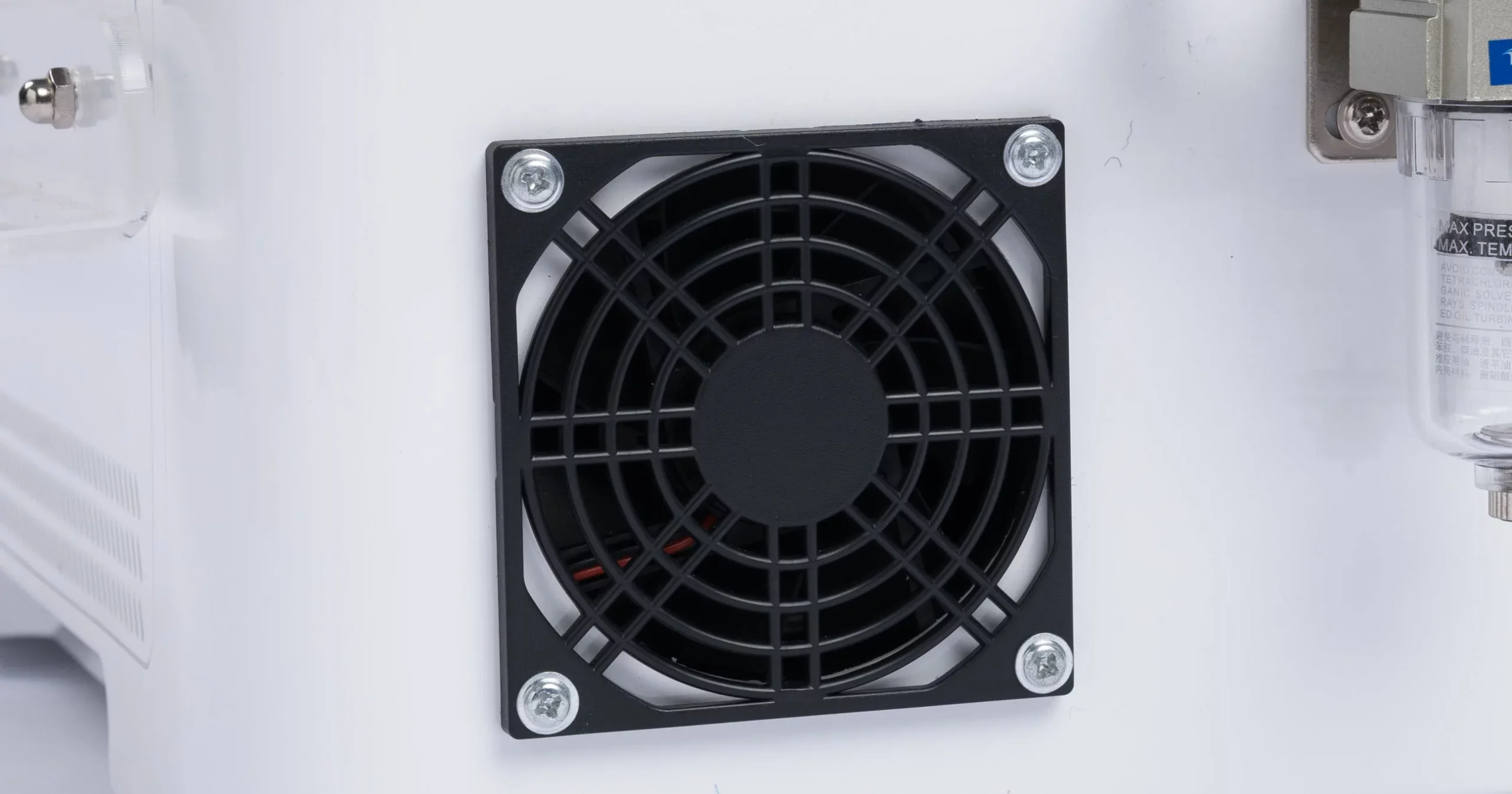
Cooling Fan
The cooling fan quickly removes heat from the unit by forced air circulation to prevent damage from overheating.
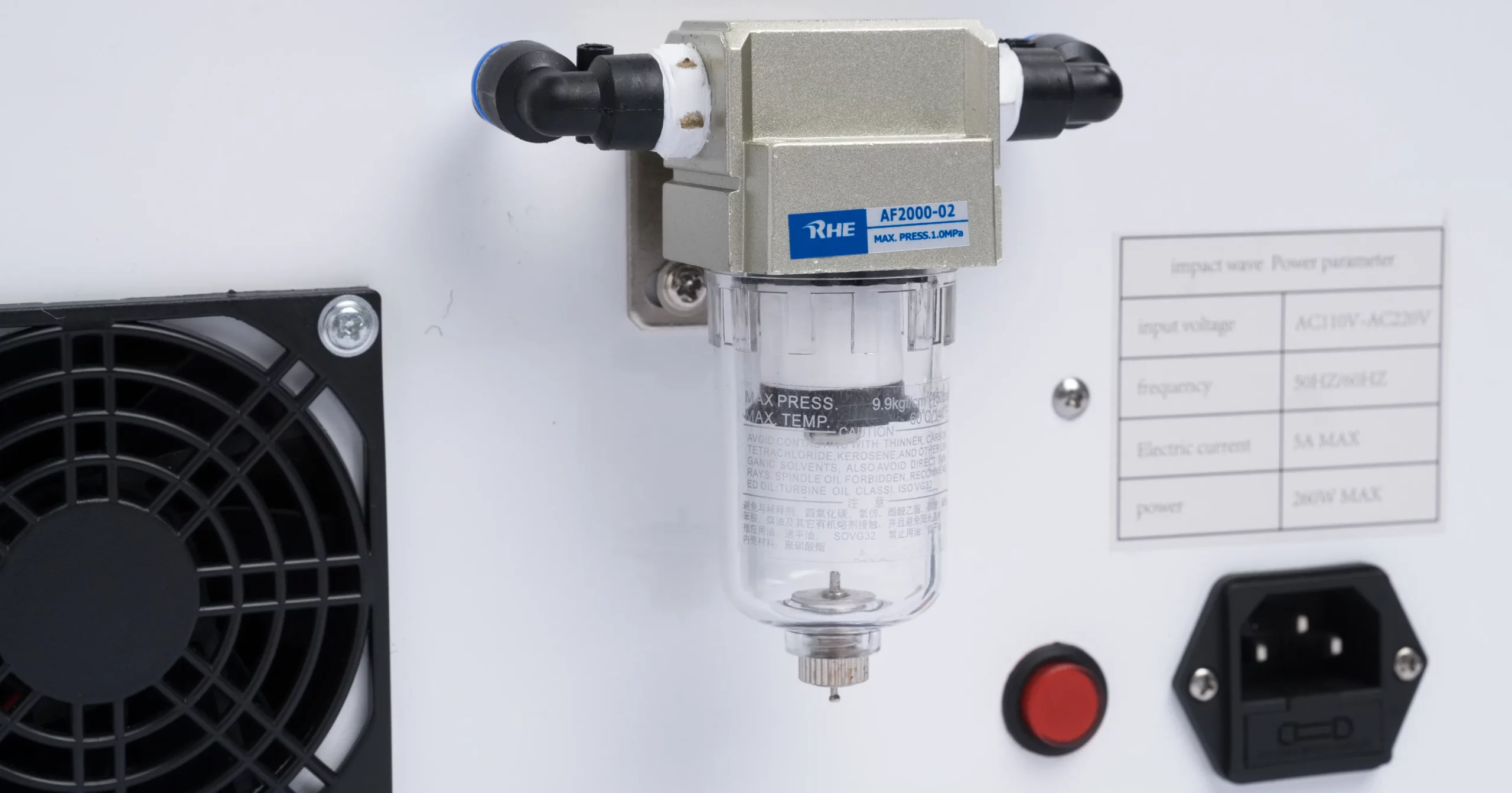
Air Filter
Filter dust, particles, and other impurities in the air to prevent them from entering the instrument and extend its service life. At the same time, ensure the stability of shock wave energy and maintain the consistency of treatment effect.
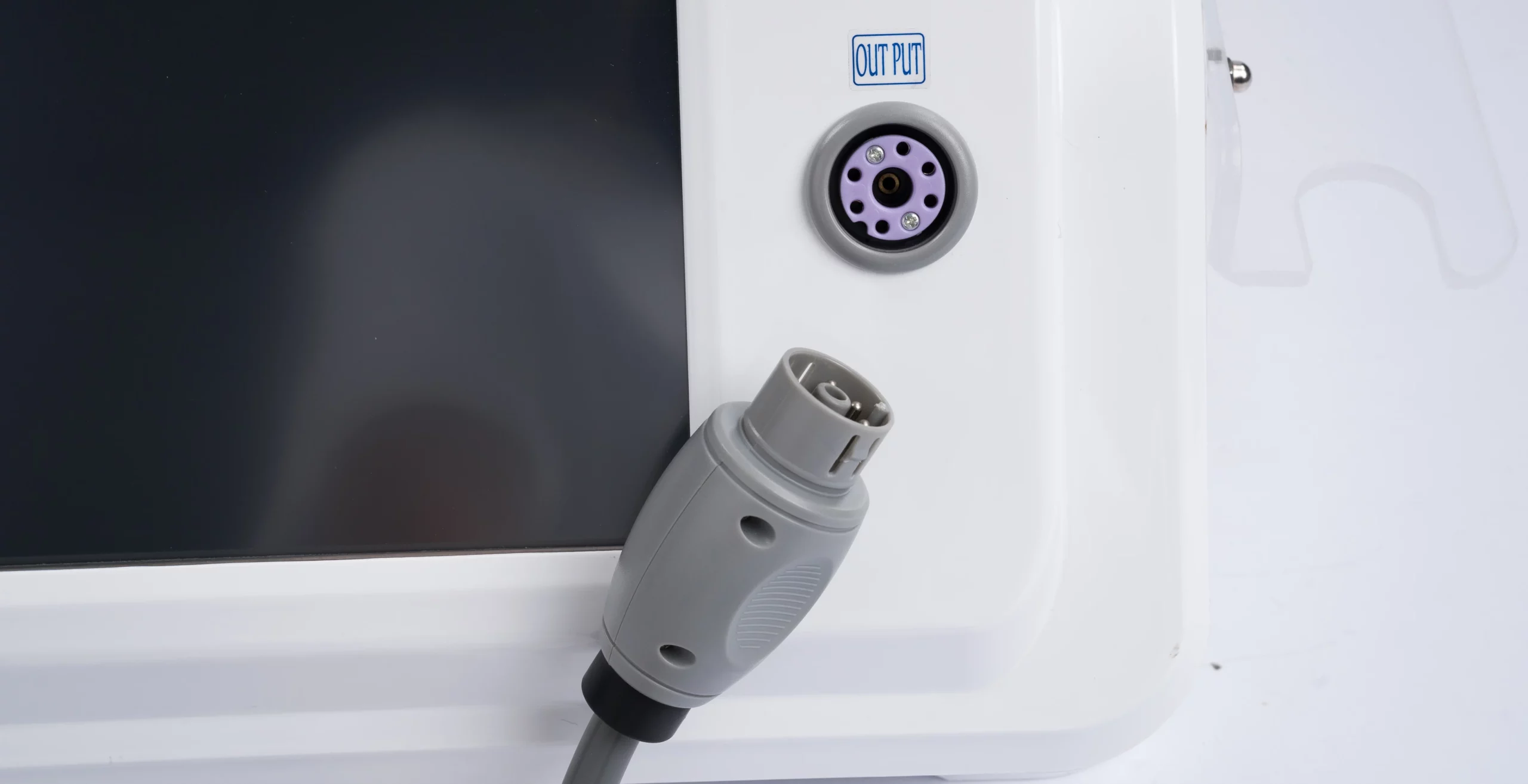
Tap-changer Connection
The main unit of Q80 and the operating handle are connected through an interface that provides stable and good contact and is easy to store after use.
Transmitter Heads Introduction
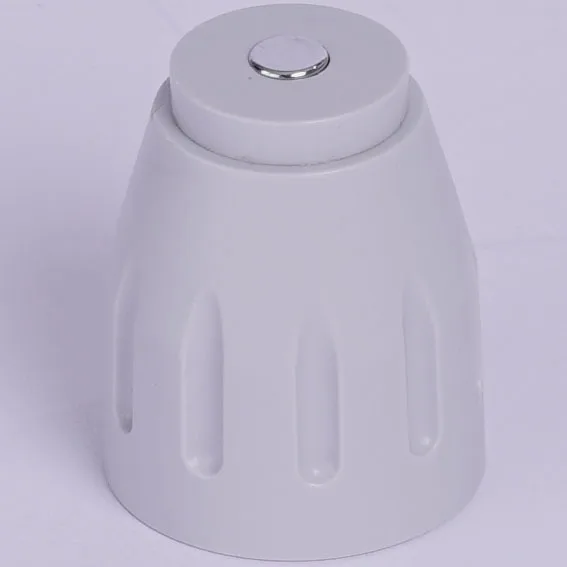
6mm Head
- Penetration depth: Generally can penetrate 2-3 cm subcutaneously. Due to its small size and concentrated energy, it can precisely target shallow, small-area lesions
- Energy Density: Relatively high, typically about 0.15-0.3 mJ/mm². The smaller area of action allows the energy to be concentrated in a smaller area, which can produce a higher energy density locally and effectively stimulate the lesions.
- Diseases Suitable for Treatment: Mainly used for diseases of small joints such as fingers and toes, such as interphalangeal arthritis, interdigital arthritis, stenosing tenosynovitis, etc. It is also suitable for some diseases with clear local pain points and small range, such as lateral epicondylitis (tennis elbow) and medial epicondylitis (golfer’s elbow) for precise treatment of local pain points.
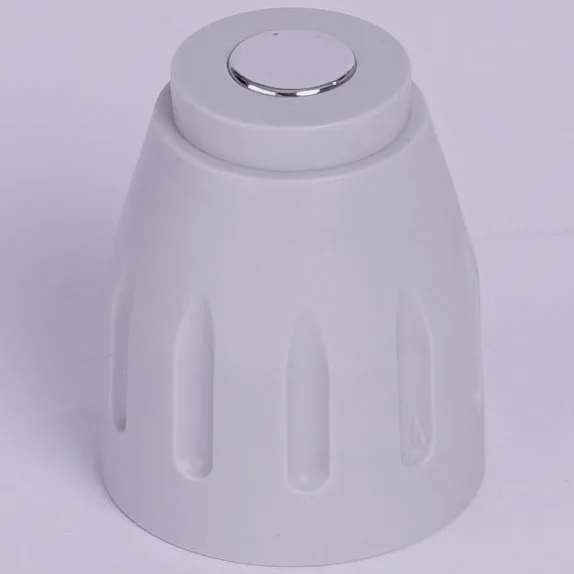
10mm Head
- Penetration depth: Usually 3 – 4 cm. The energy coverage area and concentration of this size working head are moderate, and it can better act on muscles, tendons and other tissues around medium joints.
- Energy Density: Generally between 0.12 – 0.25mJ/mm². It can provide enough energy to stimulate the diseased tissue and avoid excessive energy causing damage to surrounding tissues.
- Diseases Suitable for Treatment: Suitable for diseases of middle joints such as wrist and ankle, such as wrist synovitis, ankle sprain sequelae, Achilles tendinitis, etc. It can also be used as an auxiliary treatment for shoulder diseases such as rotator cuff injury and biceps long head tenosynovitis.
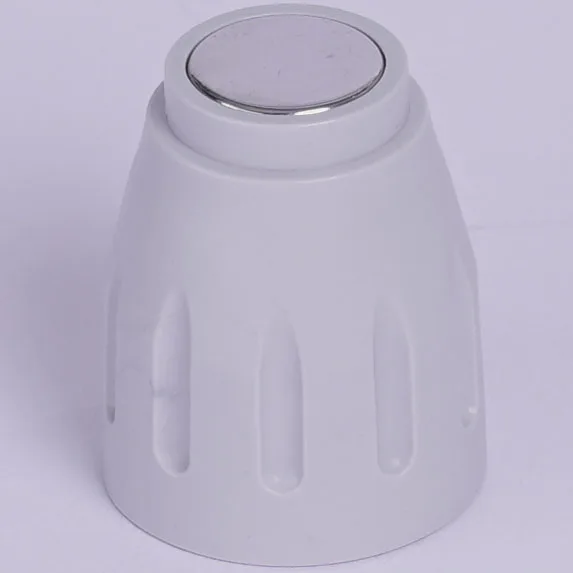
15mm Head
- Penetration depth: about 4 – 6 cm. The larger working head makes the energy distribution more extensive, which can affect the thicker muscle groups and deep joint tissues around large joints.
- Energy Density: Approximately 0.1 – 0.2mJ/mm². The energy density is relatively moderate, which can provide uniform energy stimulation over a large area, promoting local blood circulation and tissue repair.
- Diseases Suitable for Treatment: Commonly used for diseases of large joints such as knee and shoulder joints, such as knee osteoarthritis, frozen shoulder, subacromial impingement syndrome, etc. It can also be used to treat muscle strain, myofasciitis, etc. in the neck and waist.
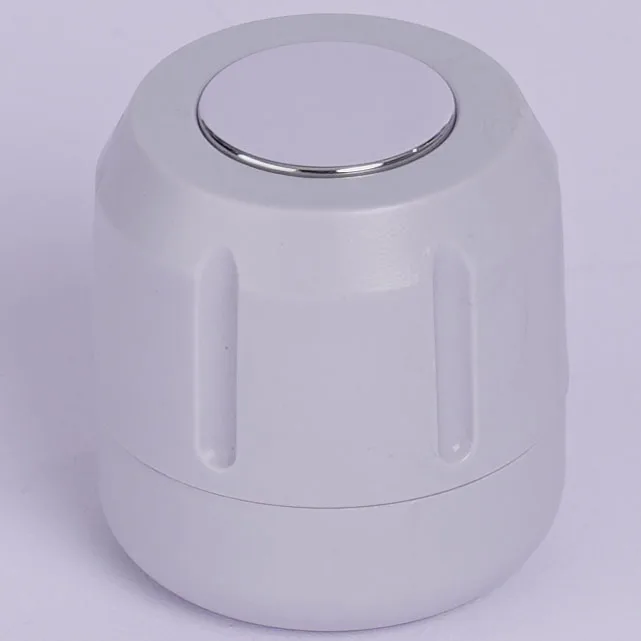
20mm Head
- Penetration depth: Generally can reach 6-8cm. The larger working area and higher energy output allow the shock wave to penetrate deeper into the muscle tissue.
- Energy Density: Typically about 0.08-0.18mJ/mm². The energy density is relatively low, but the action area is large, which can produce effective therapeutic effects on large areas of tissue and avoid excessive local energy.
- Diseases Suitable for Treatment: Suitable for large area muscle injuries, such as thigh muscle strain, hip muscle strain, etc. It also has a certain therapeutic effect on lower limb referred pain caused by lumbar myofasciitis and lumbar disc herniation. In addition, it can also be used to treat some deep muscle lesions, such as piriformis syndrome.
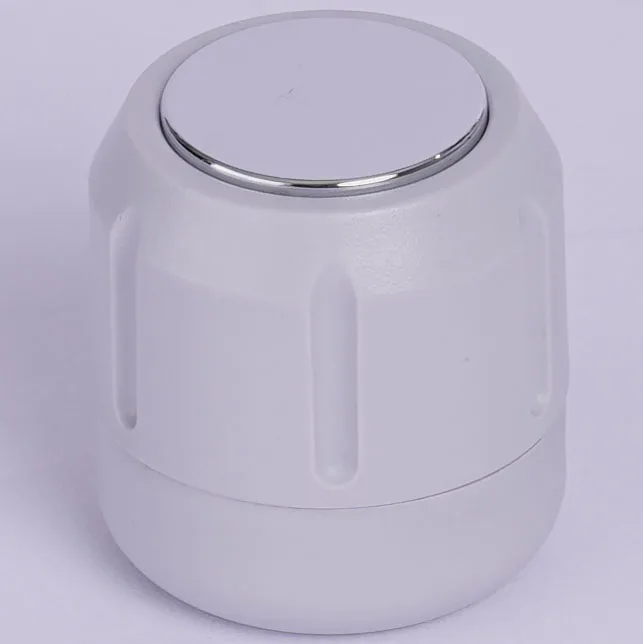
25mm Head
- Penetration depth: It can penetrate to about 8-10 cm or even deeper. It can stimulate muscle and bone tissues over a large area, and the energy can reach deep bones and surrounding tissues.
- Energy Density: Generally 0.06-0.15 mJ/mm². The energy density is low, but due to the large area of action, it can gently and widely stimulate a large area of tissue, promoting bone metabolism and tissue repair.
- Diseases Suitable for Treatment: Mainly used for large area musculoskeletal diseases, such as lumbar disc herniation and low back pain caused by lumbar spinal stenosis. It also has a certain therapeutic effect on bone-related diseases such as osteoporosis, delayed or non-union of fractures, and large-scale muscle atrophy, fibrosis and other diseases.
About Operation Pages
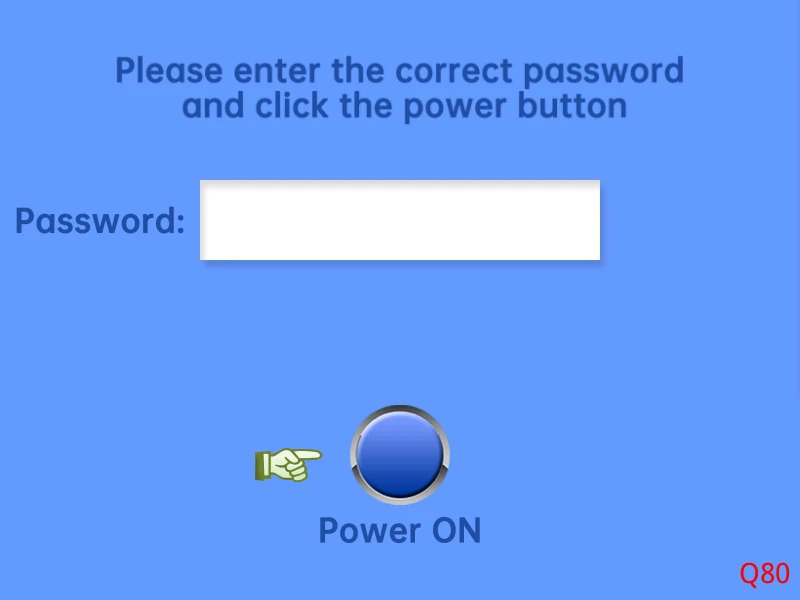
Initial password is “23456”, In this interface, long press the handle button to reset the password.
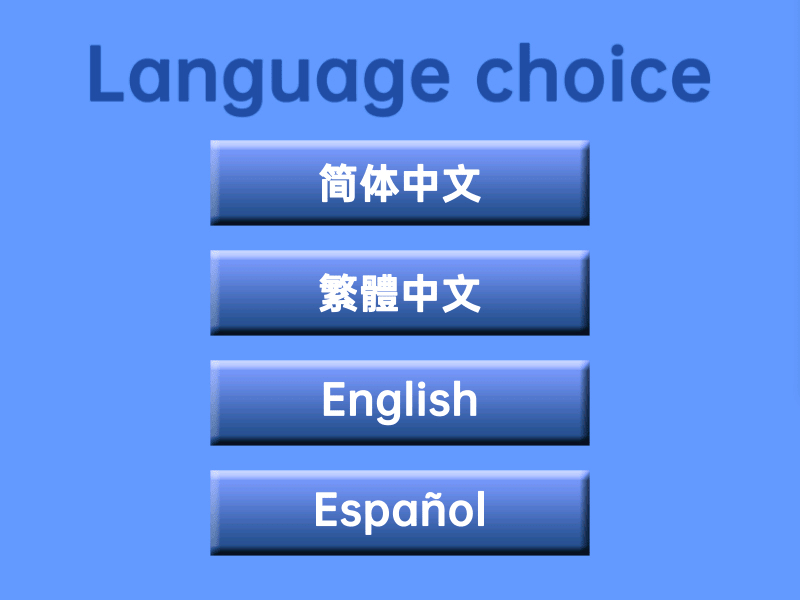
Multilingual Available

12 Modes to Suit Your Needs

One of 12 Modes
Choose one of the 12 modes, such as the currency mode, where the preset count is 1500 times, the intensity is set to 5Bar, and the frequency is 10Hz. It is recommended to use a No. 3 or No. 4 work head. Users can use the left and right arrow keys to adjust the count, intensity and frequency, and so on. Other modes also have corresponding preset counts, intensities, frequencies and recommended work heads, and users can also adjust them according to their own conditions
(Note: Please use from low power to high power to ensure your safety and comfort)
Packing List
1 x Main Machine
1 x Handle with Wire
1 x Power cord
5 x Transmitter Heads
2 x Projectiles
1 x Clean lubricating oil
Common Applicable Symptoms
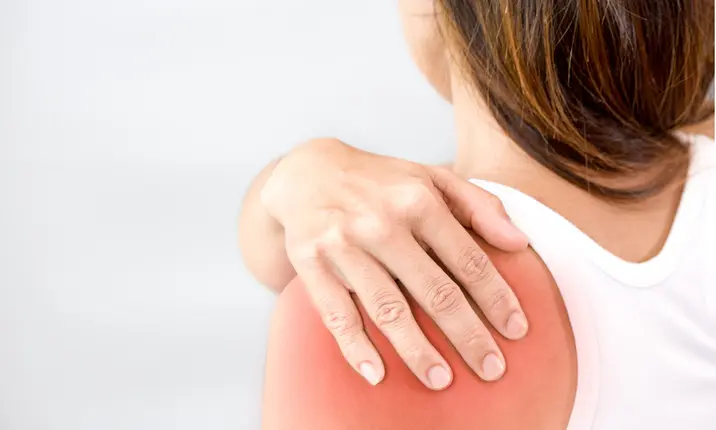
Shoulder periarthritis
Shock waves are high-energy pressure waves. When they are transmitted to the elbow of a tennis elbow patient through the treatment head, reflection, refraction and scattering will occur at the tissue interface due to the different absorption and scattering characteristics of shock waves by different tissues (such as muscles, tendons, and bones), thus generating complex mechanical stresses, including tensile stress, compressive stress and shear stress. When shock waves propagate at different tissue interfaces of the shoulder joint, complex stresses are generated, which can loosen the fibrous tissues such as tendons, ligaments and joint capsules that are adhered, restore tissue sliding and joint mobility, and stimulate bone cell activity, which is conducive to the repair of possible minor injuries.
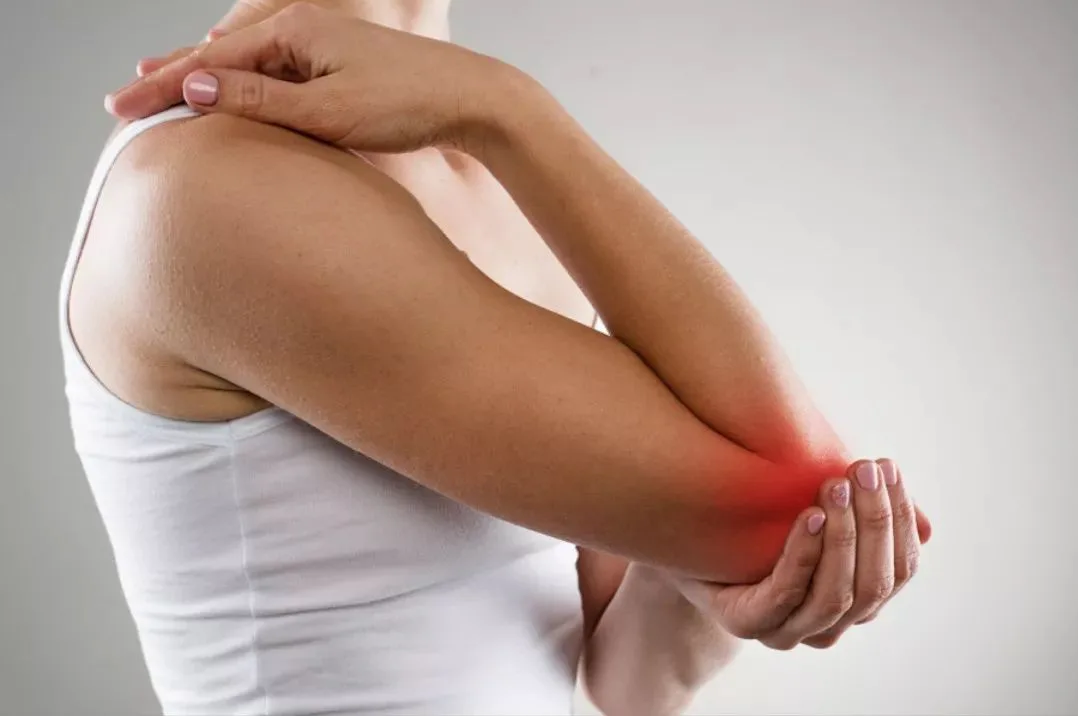
Tennis elbow
By generating tensile, compressive and shear stresses at the elbow tissue interface, the adhesion between tendons such as the common extensor tendon and surrounding tissues is loosened, normal sliding is restored, cell proliferation is stimulated, and the healing of damaged tendons and ligaments is accelerated. The cavitation effect is induced in the elbow tissue fluid, and the energy generated by the bursting of tiny bubbles destroys the fibrous scar tissue and calcium salt deposits, breaking the calcification foci into small particles for easy absorption by the body, reducing the stimulation and compression of nerves and blood vessels.
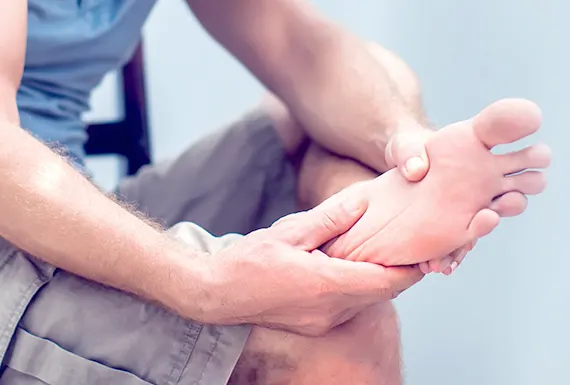
Plantar Fasciitis
The shock wave acts on the interface between the plantar fascia and the surrounding tissues. The stress generated can loosen the adhesion between the fascia and the fat pad, muscle and other tissues, improve the elasticity and sliding properties of the fascia, and at the same time repair and stimulate the possible small tears or injuries. It changes the permeability of the cell membrane of the plantar fascia cells, releases bioactive substances, promotes angiogenesis and fibrous tissue repair, and enhances the strength and toughness of the plantar fascia. At the same time, it regulates the sensitivity of nerve endings, inhibits the transmission of pain signals, achieves analgesic effects, and relieves the pain and discomfort caused by plantar fasciitis.

Delayed fracture healing
Shock waves propagate in the bone tissue and surrounding soft tissue at the fracture site, and the stress stimulation generated can activate bone cells, promote callus formation and fracture healing. It can simulate the physiological stress in the fracture healing process, causing micro-damage to the trabeculae at the fracture end, thereby initiating the bone repair mechanism. Shock waves stimulate cells at the fracture site to release a variety of growth factors, such as bone morphogenetic protein and insulin-like growth factor, which can promote the proliferation and differentiation of osteoblasts, accelerate the synthesis and mineralization of bone matrix, and thus promote fracture healing. In addition, shock waves can also improve angiogenesis at the fracture site, increase local blood supply, and provide necessary nutritional support for fracture healing.
Click Q80 manual to kindly check the instruction.
Reviews (0)
Only logged in customers who have purchased this product may leave a review.

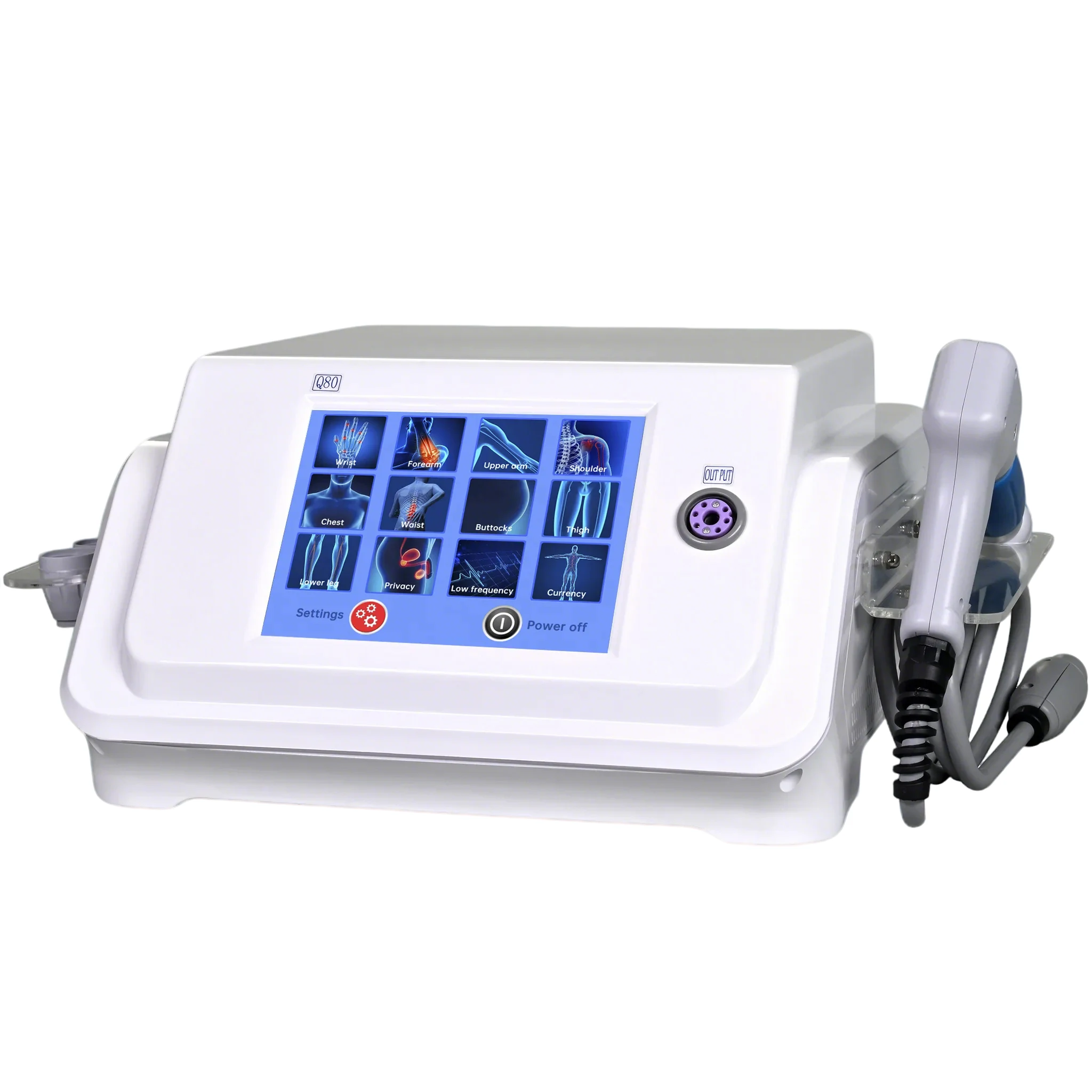
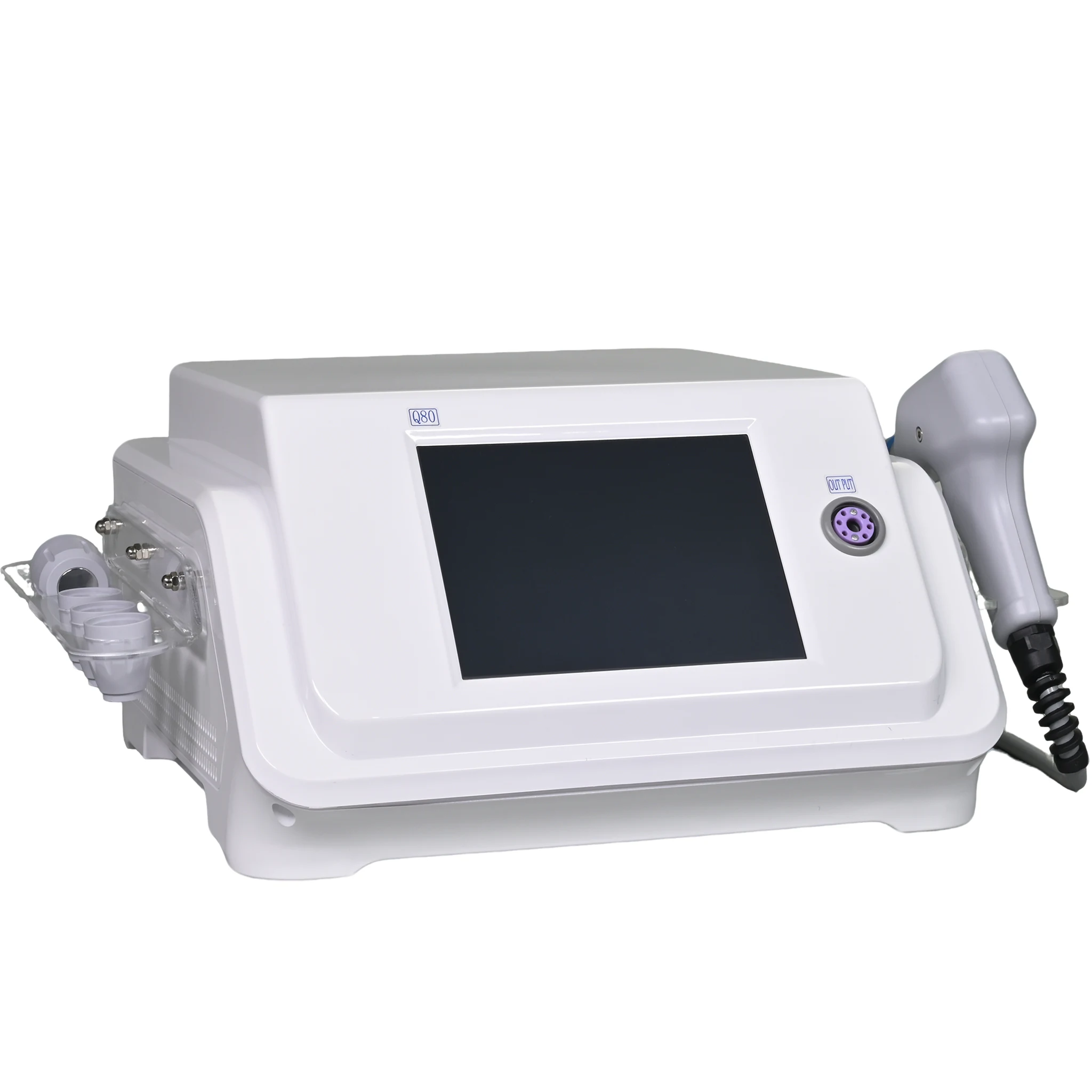
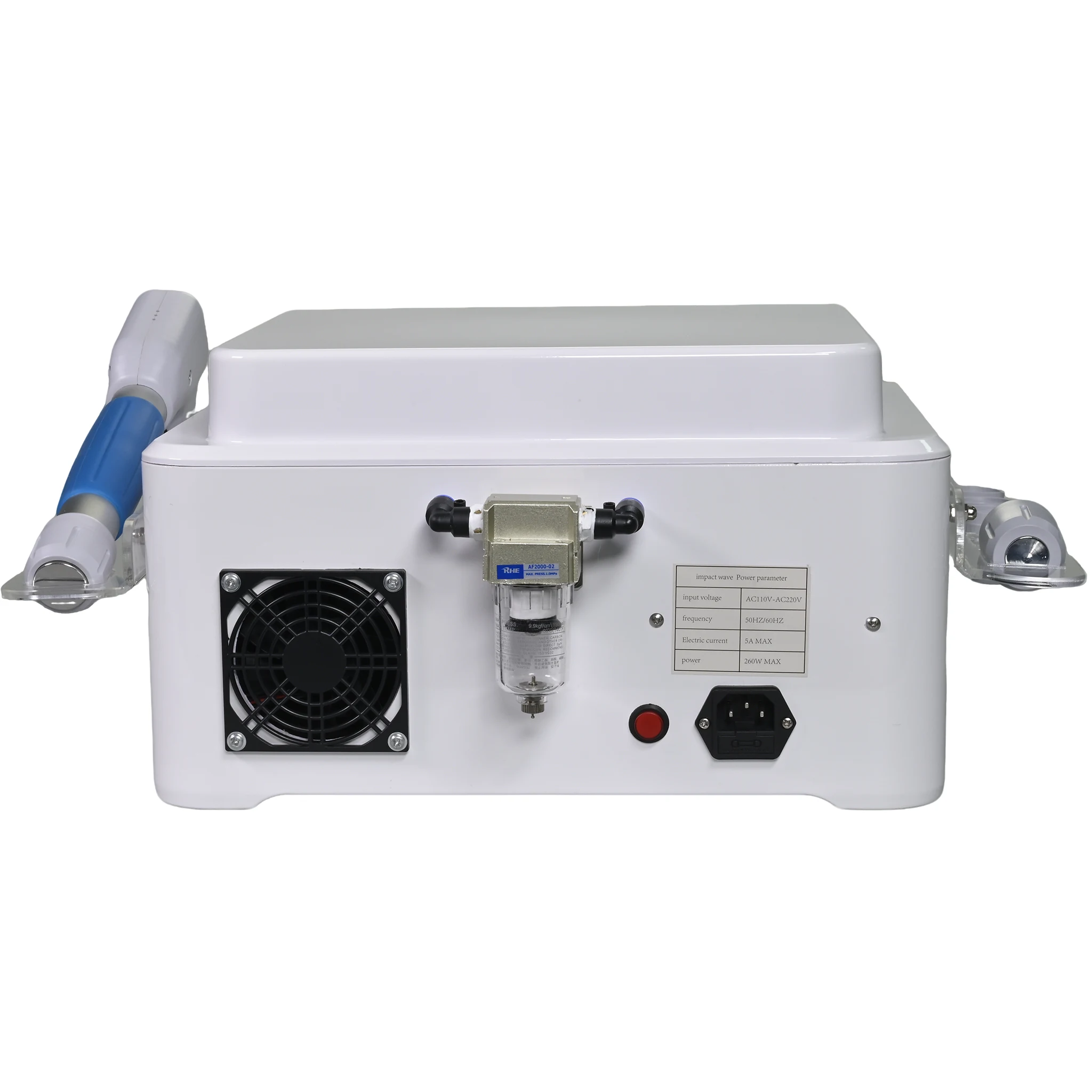
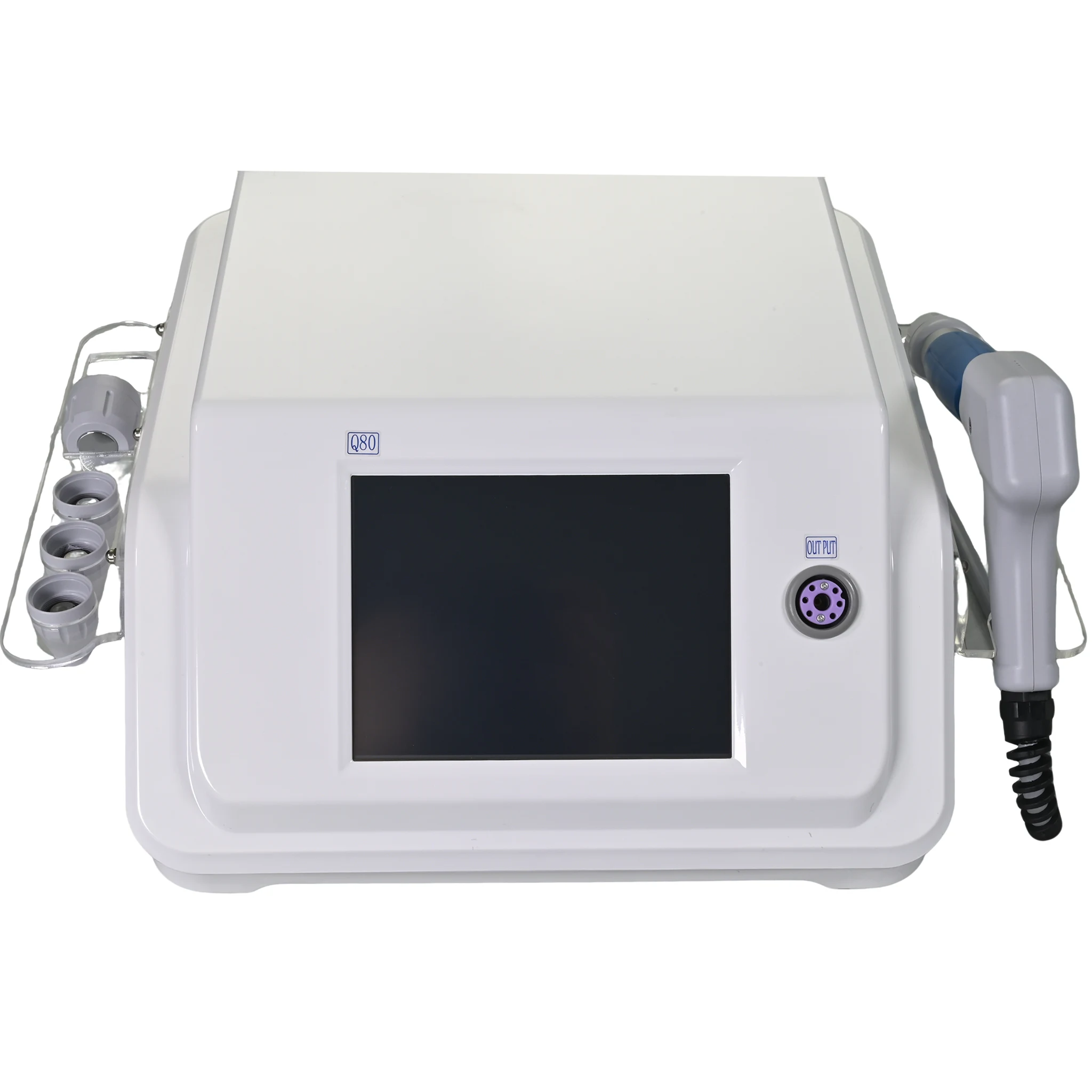

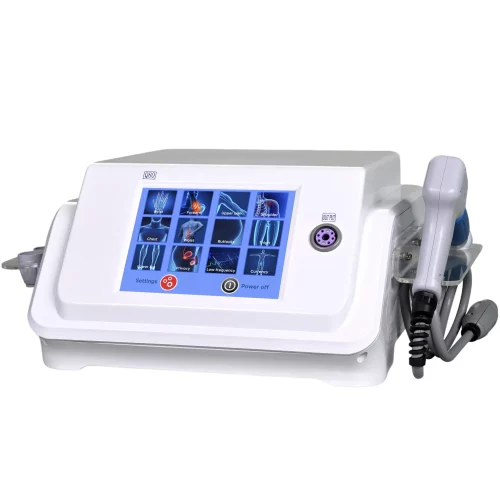
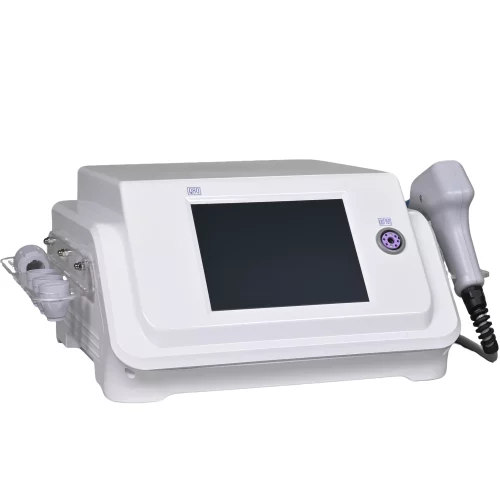
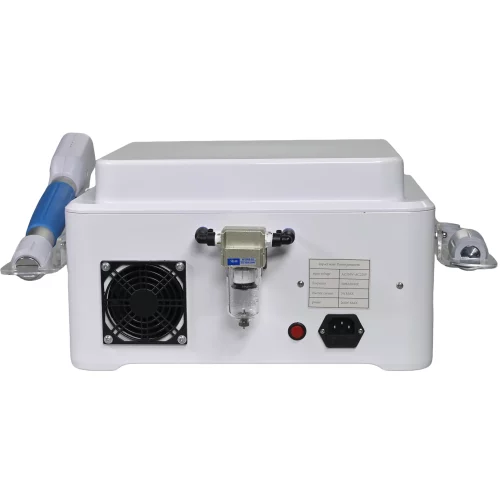
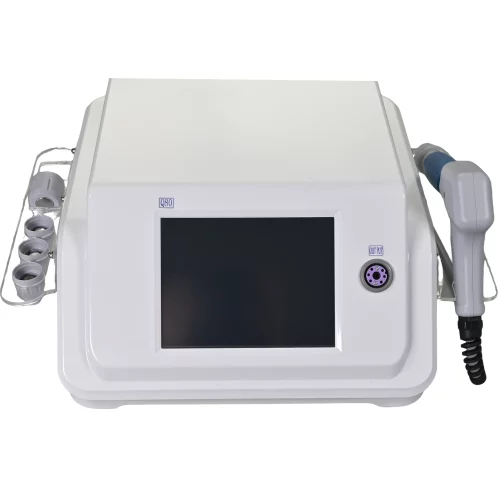
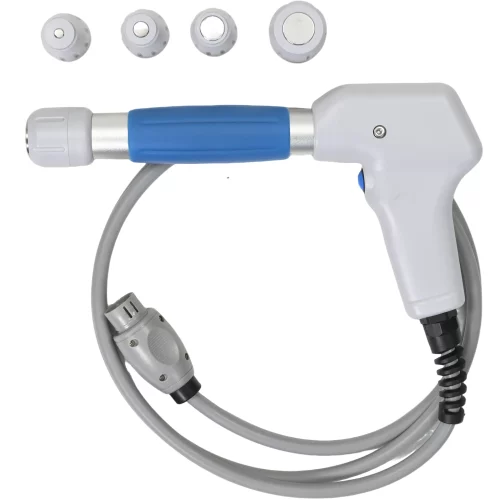
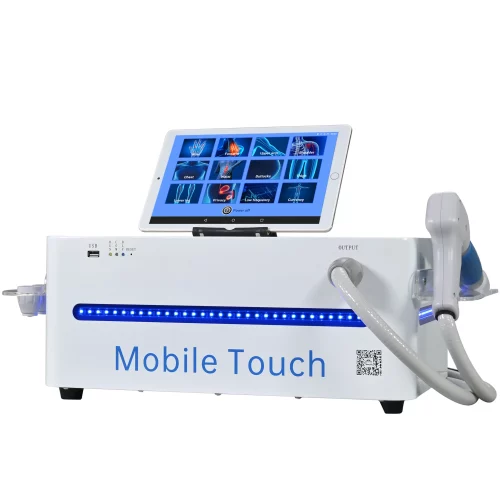
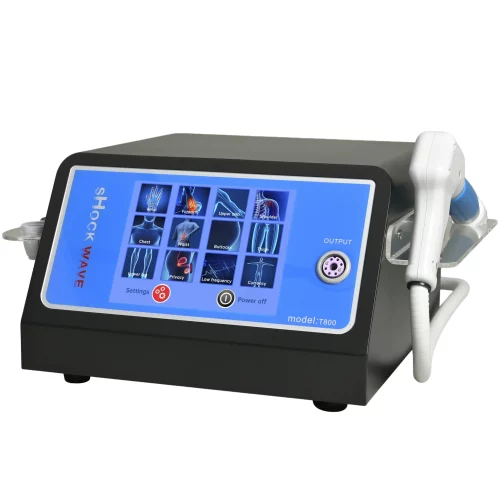
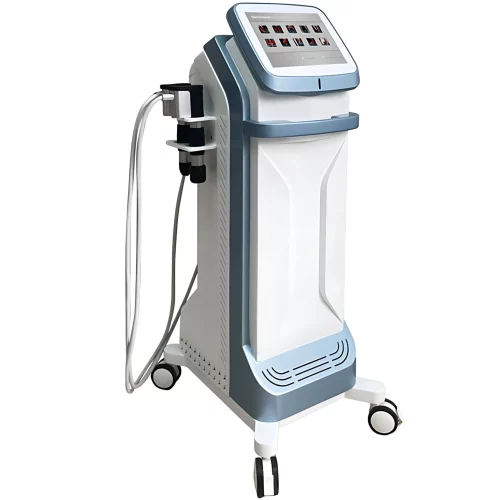
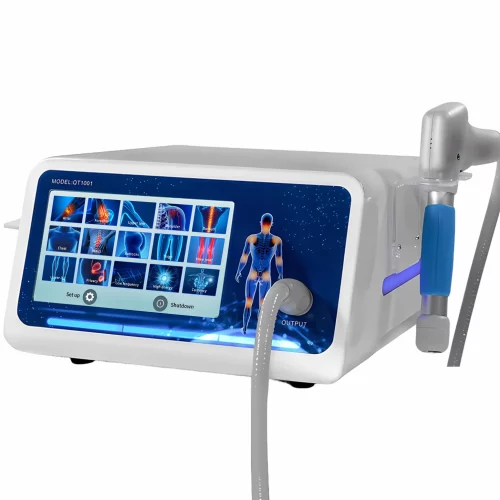
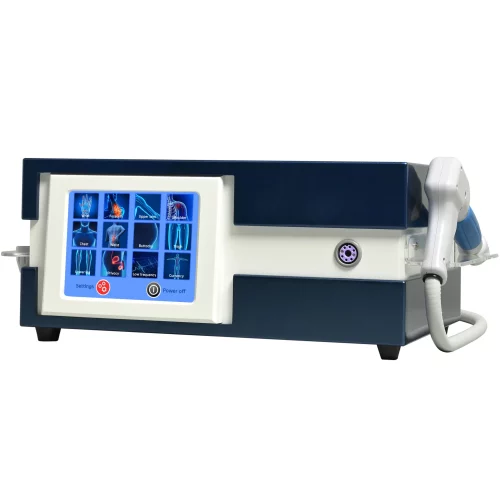
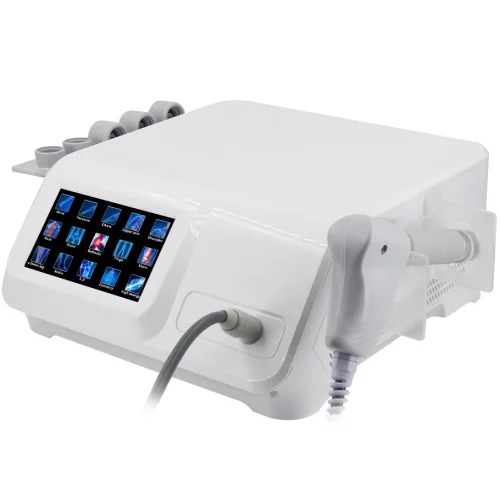
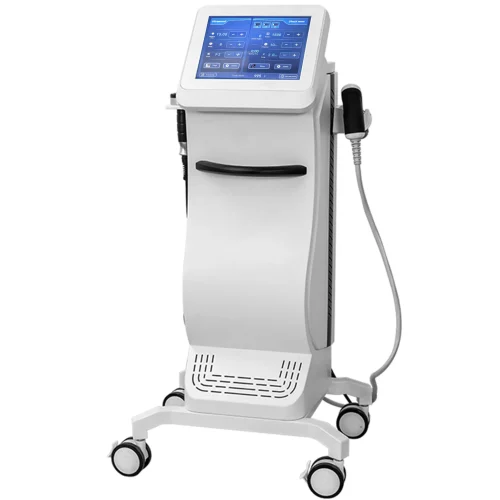

Reviews
There are no reviews yet.